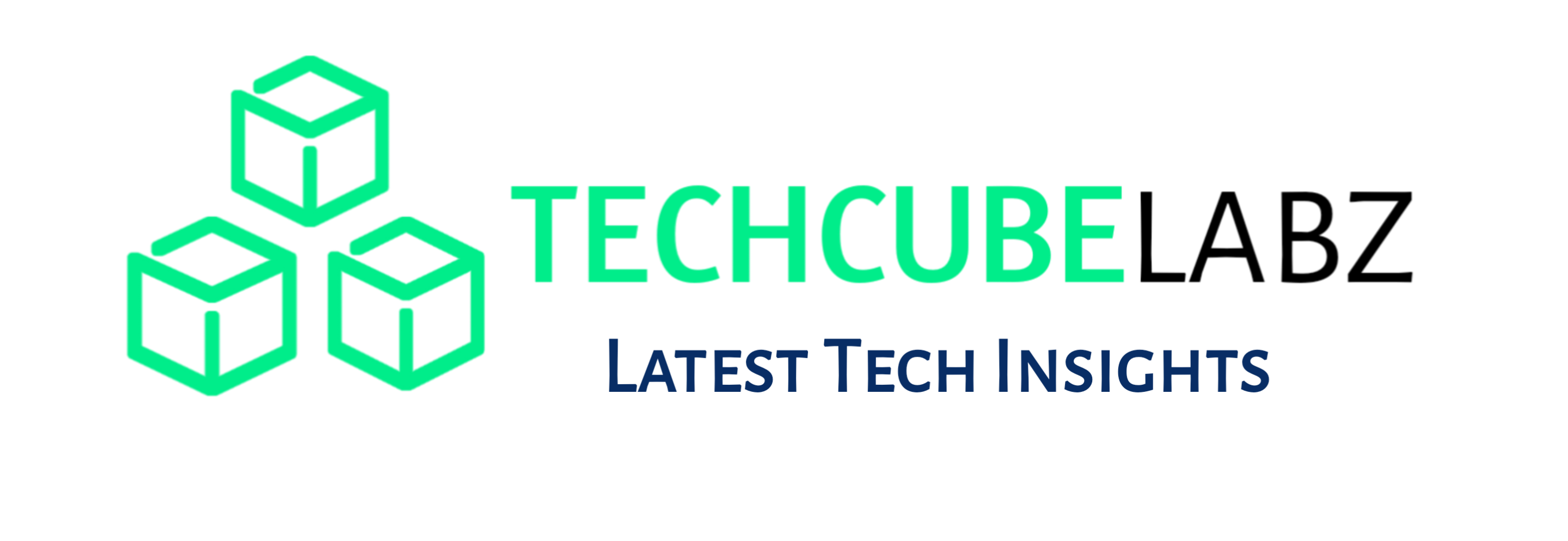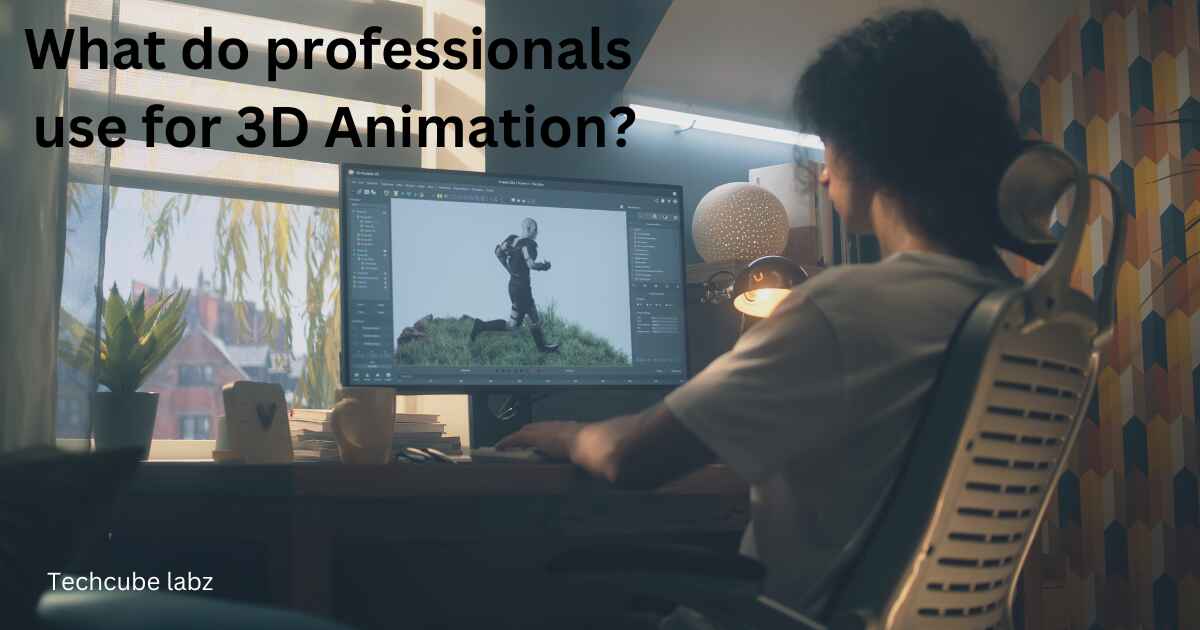
What do professionals use for 3D Animation?: More and more studios use 3D Animation to improve their creative output as computer processing power is becoming cheaper and more accessible. Even a decade earlier, the technology was revolutionary.
Now, students can learn it on their own. Anyone who wants to be successful in 3D Animation will need to know how to use several 3D software applications.
Virtually every 3D Animator will have to be familiar with Adobe After Effects. Many will also need to know Cinema 4D or Premiere Pro.
3D animators are creative professionals who design and build 3D animated products for entertainment and consumer goods. Computer technology creates the illusion of motion, depth and weight by taking static images.
3D animators create everything from animated logos and webpages to 3D-rendered models for Hollywood films.
Also, they work in the consumer software industry, video games, and other entertainment industries you may not have expected, such as theme parks.
3D animators are often responsible for thousands of tiny digital changes that go into modern film and TV.
3D Animators will likely find employment in the film and TV industry, as their skills are in demand. It’s not the only industry where they can work, but this is the most common. [What do professionals use for 3D Animation?]
9 best software is used for a professional 3D animation
- Autodesk Maya
- Daz3D
- Key Shot
- Light Wave 3D
- Blender
- Autodesk 3ds Max
- Houdini
- Marvelous Designer
- Unreal Engine
1. Autodesk Maya
Autodesk Maya, sometimes called a 3D modeling program, is a powerful, large and comprehensive 3D digital content creator.
It does much more than modeling. Maya has mature modules that include modeling, texturing and rigging.
It also includes dynamic simulations and rendering. Maya’s depth and breadth of tools and quirks make it a complex learning program.
You’ll need to be patient and willing to endure crashes and frustrations to master one of the most popular animation programs in the entertainment industry.
Autodesk offers Maya a variety of licensing options. A monthly subscription costs $225, or $1785 if paid annually. A new Flex token system allows you to use just $6 tokens for a day.
Flex is a good option if you need access only occasionally. Tokens that are not used after one year expire.
The minimum quantity to purchase is 100 tokens. You pay $300 to use the tokens for 16 days. [What do professionals use for 3D Animation?]
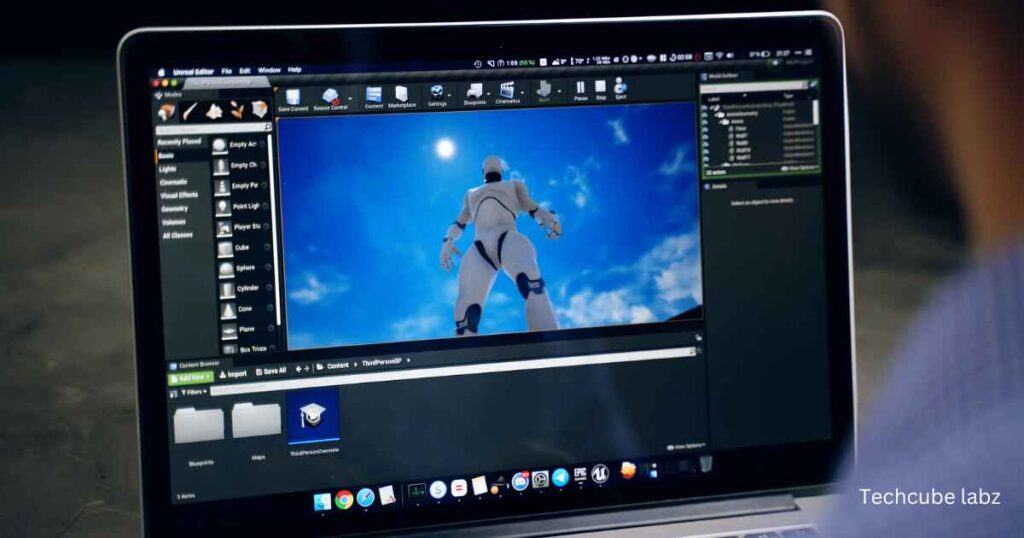
2. Daz3D
First, I downloaded DAZ 3.0. Poser was its only competitor. The characters in DAZ were of a much higher quality. After using both programs for several years, I switched to DAZ after many years of use.
I am thrilled with the performance of DAZ, its tech support and what I can render. I use it for my book covers and am always happy with how they turn out.
I love bringing a character in one of my stories to life. I’ve done some animations, but I usually do stills.
I highly recommend DAZ for all writers in need of book covers. It is the most accessible 3D software to use that I have tried! The tutorials are easy to understand and follow.
The software comes with various human models, clothes, props and settings. Weekly freebies are available.
A shop on the site has hundreds of reasonably priced products by artists. The site and the software have been used weekly for about a year and a half.
I am thrilled with my purchases. DAZ is very strict with its artists, and I experienced a few issues. Tech support was excellent when I needed it.
Forums are very active, and the users are also helpful. [What do professionals use for 3D Animation?]
Read Also: What is the best free typing software?
3. Key Shot
Key Shot renders are easy to use. The intuitive interface guides you through adding lighting and materials to your 3D model.
Key Shot does not act as a plugin to a host application; instead, it syncs your model from DCC directly into Key Shot.
Key Shot will replicate any changes you make to the model. After the sync is successfully set up, artists can add materials and lights using drag-and-drop tools.
Key Shot is available with virtual reality and the ability to share renders over the internet for those willing to pay an extra fee. These features come standard with Key Shot and are intuitive, including wizards for beginners.
The release contains several updates, including multi-layer EXRs and improved color workflow. It also includes an extended 3D Paint texturing system.
Key Shot renderer is not the cheapest but the easiest and most intuitive. Artists pay a higher subscription fee to get the benefits of a renderer with fewer features. [What do professionals use for 3D Animation?]
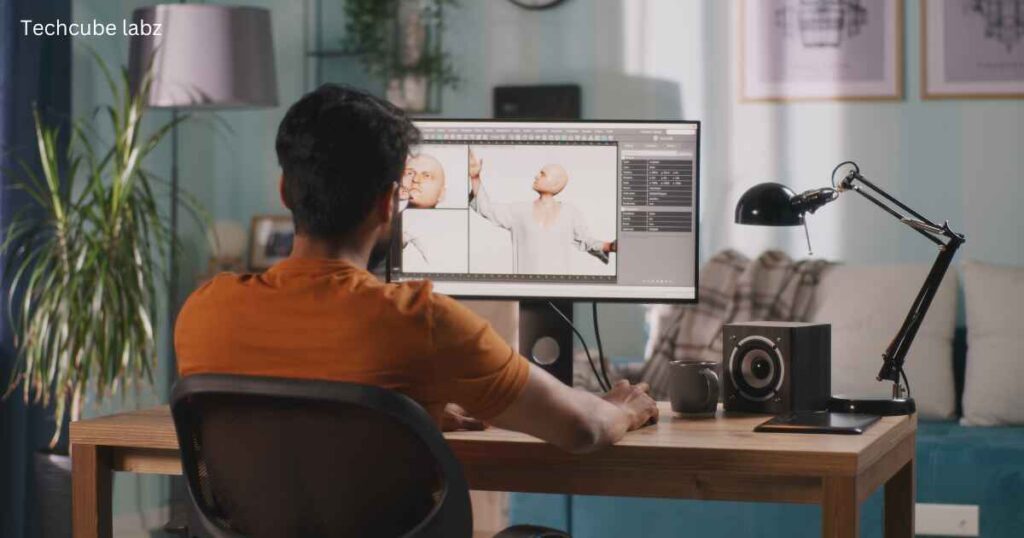
4. Light Wave 3D
I haven’t used New Lightwave for several years. Lightwave was the first 3D program I learned in high school. Back then, the computer lab still had some old floating licenses.
The disks were accumulating dust because there was no interest among students, and they had been deemed too complex to be taught as part of a class. I borrowed one of the dongles from the instructor to use on a project with a group.
That was my first experience in 3D. I took a Digital Arts and New Media class at the local community college and found that they also used Lightwave. Here, I learned 3D skills at a professional level and purchased my own license for home use.
I eventually switched to Blender due to its greater flexibility and financial reasons. Still, Lightwave will always hold a special place in me. Lightwave’s greatest strength was its precise modeling workflow. It reminded me of CAD.
The rigidity of the modeling is not as suitable for organic freestyle modeling. Still, it’s great for modeling architecture, robots and death stars.
After switching to Blender, I missed some of the precision tools. Only when I started CAD modeling did I fill that gap in my workflow. [What do professionals use for 3D Animation?]
Read Also: Which software is best for graphic design for beginners?
5. Blender
Blenders are great for creating a variety of tasty and healthy treats. Your Blender can make smoothies, soups, fruit juices and other things such as hummus, salsa, mayonnaise, etc. Making smoothies and soups at home is a great way to save money.
This guide will help you narrow your choices and find the right Blender. You can learn more about our top picks, which include portable blenders designed for smoothies and jug blenders meant to be placed on the kitchen counter.
We test each Blender to see how it blends various types of foods, as well as how loud it is and how easily it can be cleaned.
Do you need a blender or a food processor? The best processors are similar. A blender will do the trick if you want to make a liquid, such as a smoothie or soup.
The food processor is better for things like salsa or pesto. Are you clear? Here are our top picks of blenders that will suit various budgets and types of food.[What do professionals use for 3D Animation?]

6. Autodesk 3ds Max
3ds Max is a very comprehensive software for 3D modeling and animated graphics. It offers a lot of advantages. Its intuitive and easy-to-use user interface makes creation faster and easier.
Its extensive library of models, authoring tools, and other features allow me to work with various projects such as video games, animated movies and architectural visualizations.
Animation tools are advanced, allowing me to create realistic and fluid movements for objects and characters. It can also handle large files and high resolutions and perform quickly and efficiently.
Its compatibility with other 3D authoring software makes it easy to incorporate into my production pipeline.
Simple Interface: The 3ds Max user interface is more straightforward than other 3d software. User-created plugins and scripts.
Max scripts allow you to customize 3ds Max and create unique designs using simple codes. Max Script can be learned by artists relatively quickly.
Edit Poly Modifier – 3d Studio Max has an edit poly modifier that allows you to stack different modifiers. [What do professionals use for 3D Animation?]
7. Houdini
Side FX was founded by rocket scientist Greg. Early software versions from the visual effects software company (VFX), Side FX, were the first to implement a particle system in the interface and include an expressions language.
Side FX went on to develop powerful VFX Software, Houdini. This software produces stunning visuals from explosions to physics-based destructions.
Houdini, while a 3D procedural software for modeling, rigging animation, lighting and more, is superior to any other 3D modeling software for visual effects. Houdini has become a big business.
Hollywood blockbusters like Titanic or Contact were among the first to use the software’s powerful effects tools. What’s the problem?
It’s like learning rocket science to learn these tools. Houdini is one of the most complex 3D modeling products for visual effects. It was a PC Mag Editors’ Choice. [What do professionals use for 3D Animation?]
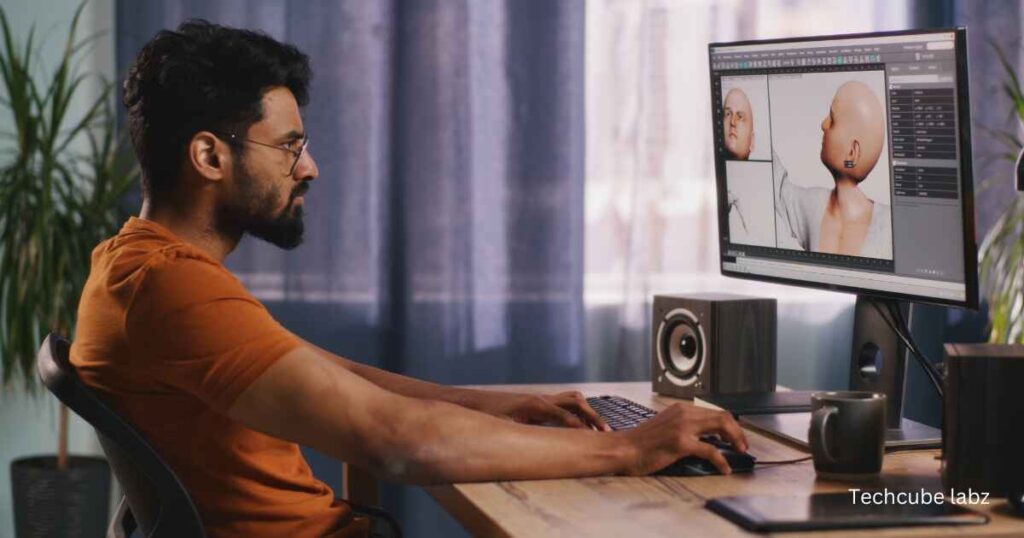
8. Marvelous Designer
There’s also 3D sewing, which allows users to sew their items in 3D view. There is also a brand-new sculpting tool, automatic arrangement points creation and the ability to trace patterns using a UV map.
The new features aim to improve the workflow of CG artists and minimize the time spent on tweaking a garment exported after you’ve finished creating it in Marvelous Designer. The question is, Are these new features good? Yes, they are. Take a look.
The semester is still in beta but is significantly improving over Qualify, generating more. It can be found in the 3D View menu by right-clicking on the mesh. This will give you a nice, even mesh, even if you do some sculpting or smoothing afterward.
It was only on the mesh edges that I encountered problems, and this was especially true on thicker cloth. The current beta implementation is much easier to than the beta version.
However, it’s in beta and is probably still being fine-tuned. We hope the final tool won’t take quite as long to fully implement as Qualify. [What do professionals use for 3D Animation?]
9. Unreal Engine
Unreal Engine is more user-friendly for single developers, independent movie producers and indie game studios. It’s a powerful toolset for creating 3D games. You can create realistic-looking games, but you can also use models to fit your artistic vision.
Look at Sacrifice, an example of a small studio making a great unreal game. If you are looking for AAA Games with a realistic look or movie quality, look at Gears of War 5 and Kingdom Hearts 3.
Unreal has an asset shop where you can purchase models and tools to quickly prototype or build your game.
It also has a blueprinting system that allows you to program your game’s logic without knowing C. The Engine runs on a variety of platforms, including mobile.
We’re looking at Unreal Engine 5, something the world has been waiting eight years for. UE5 is a massive leap in technology and redefines the gaming industry.
It will also profoundly impact the future of augmented reality and the digital counterpart of the physical world.
This release comes at a crucial time and will provide many technologies required to move many companies toward realizing their ambitious plans for the world. [What do professionals use for 3D Animation?]
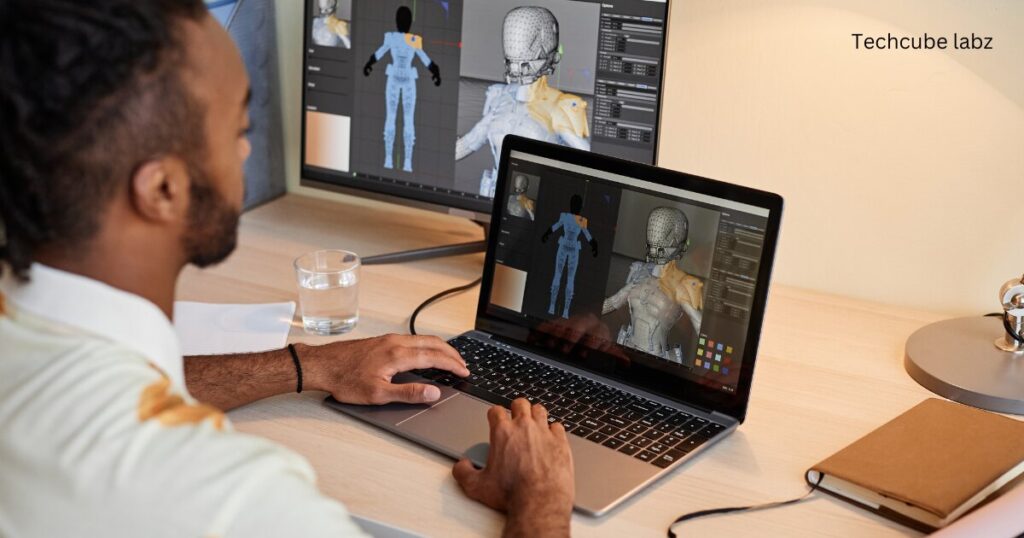
Conclusion:
Professionals use many powerful software tools to create 3D animations, all tailored for different aspects of Animation.
Autodesk Maya and Blender are industry standards because of their flexibility and comprehensive features.
Artists may use specific tools, such as Houdini or ZB rush, depending on the complexity of the simulation. Software selection is often based on the project’s needs and the artist’s workflow.
The desired result also plays a role. This makes versatility and adaptability essential skills for 3D Animation. [What do professionals use for 3D Animation?]
What do professionals use for 3D Animation?: FAQ
1. Which software does the professional use to create 3D animations?
Ans: Professionals use different software programs depending on their project’s requirements. Autodesk Maya and Blender are industry-standard 3D modeling, Animation and rendering tools. Tools like ZB rush or Marvelous Designer can be used for specialized tasks such as digital sculpting or cloth simulation.
2. Which 3D animation software is most prevalent?
Ans: Autodesk Maya is a 3D animation program many film and gaming industries use. Blender is a free, open-source software popular among independent artists and small studios.
3. Does Blender have a professional use?
Ans: Yes, Blender can be used in many industries, including advertising, film and game development. Blender is a powerful 3D tool that supports all 3D pipelines. Its open-source license also makes it a popular choice for studios and freelancers.
